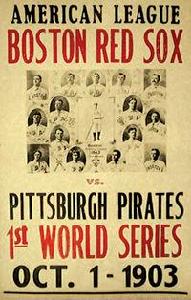
Although the "Fall Classic" as we know it didn't begin until 1903, Major League Baseball had several versions of a post-season championship series before that. In 1884, the Providence Grays of the National League outplayed the New York Metropolitan Club of the American Association in a three game series for what was originally called "The Championship of the United States." Several newspapers penned the Grays as "World Champions" and the new title stuck. Over the next six years, different variations took place between the National League and American Association pennant-winners, ranging in length from six to fifteen games. The American Association folded unexpectedly after the 1891 season forcing a suspension of the series. The following year, the National League absorbed four of the American Association's former franchises and expanded to twelve teams in an effort to promote the growth of baseball and maintain the public's interest. They played a split season in which the first-half winner played the second-half winner for the league championship. Many fans did not support the new system and the split season was promptly dropped in 1893.
In 1894, Pittsburgh's owner William C. Temple offered a championship trophy to the winner of a best-of-seven-game series between the National League's first and second-place teams. In addition, he stated that the winning franchise would receive 65% of all ticket sales and the losing team would pocket 35%. Temple's novel idea would last for the next three years and helped to build the foundation for baseball's post-season popularity. More changes were on the horizon and in 1901, the American League was established much to the dismay of the senior circuit. Suddenly, baseball found itself engaged in a "civil war" as both rival leagues competed separately for the fan's loyalty and attention. Two years later a truce, previously known as the "National Agreement", was redefined outlining baseball's employment, salary and travel requirements. The 1903 compromise produced the business blueprint for major-league baseball and resulted in a merger that has lasted to this day. Once again Boston and Pittsburgh, the top American and National League teams, found themselves competing against one another in the first official "World Series".
